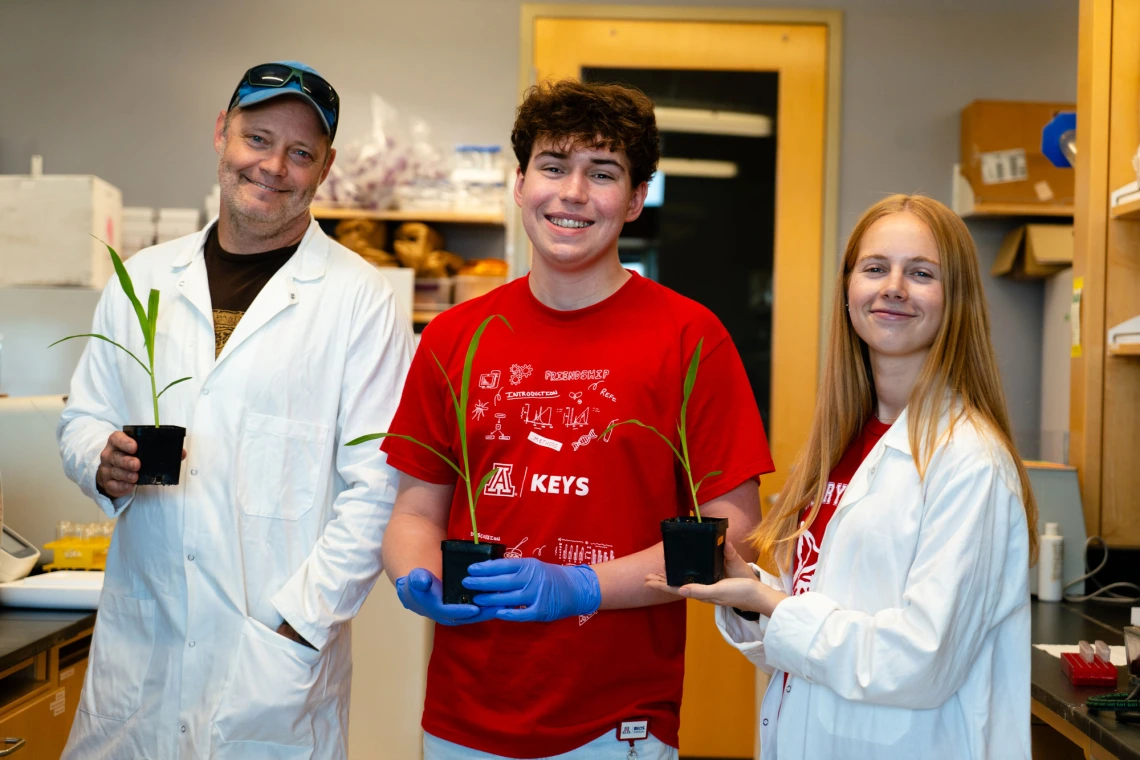Tracking the signals plants use to fight back
2025 Tucson KEYS intern William Jacobsen (he/him) tested how corn plants respond to different combinations and timing of green leaf volatiles signals in the lab of Chris Frost.

2025 Tucson KEYS intern William Jacobsen (right) from Catalina Foothills High School worked with undergraduate mentor Sophie Shomper (left) to study how plants use natural chemicals to interact with their environment.
Emilia Gazman, BIO5 Institute
In the chemical ecology lab of Chris Frost, faculty member at the University of Arizona BIO5 Institute, researchers study how plants use natural chemicals to interact with their environment. Frost’s team focuses on green leaf volatiles (GLVs), which are compounds that plants release when damaged, for example, when a caterpillar takes a bite. These chemicals can warn nearby plants or attract helpful predators to fend off pests.
This summer, Tucson KEYS intern William Jacobsen (he/him) worked with undergraduate mentor Sophie Shomper to test how corn plants respond to different combinations and timing of GLV signals. They applied specific combinations of GLVs to corn leaves, then measured how the plants reacted both internally and in their interactions with caterpillars.
“William asks great questions that make me think more deeply about my own project,” said Shomper. “I’m learning right alongside him.”

William Jacobsen (left) loads gas samples into a machine for measurement in the lab of Chris Frost.
Emilia Gazman, BIO5 Institute
By tracking plant defenses and caterpillar growth, they aimed to learn how timing and chemical combinations affect a plant’s ability to protect itself.
“We designed what we thought would be a straightforward test,” Frost said. “But the results surprised us—everything was emitted at once instead of in stages. That completely reshaped how we think about the next phase of our research.”
Together, their work supports a broader goal: understanding how plants interpret chemical messages to help farmers grow more resilient crops.
“I’ve learned it’s okay to make mistakes, it's how you build your skills,” said Jacobsen. “I’d love to keep doing research that helps solve real-world problems. Getting to use science to help others, that’s what I want to do.”

(Left to right) Chris Frost, William Jacobsen, and Sophie Shomper holding corn plants in their lab.
Emilia Gazman, BIO5 Institute
Take a closer look at how KEYS interns are helping advance real-world research across Arizona.

